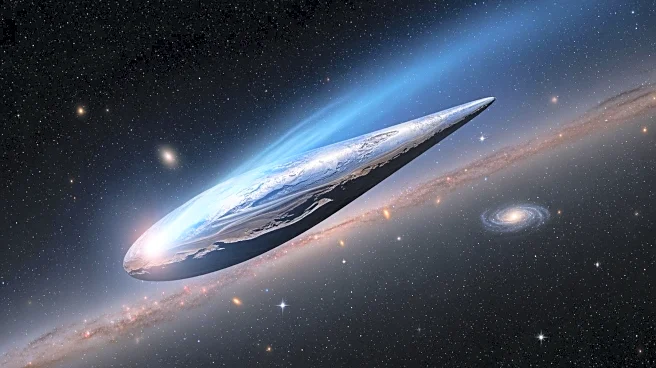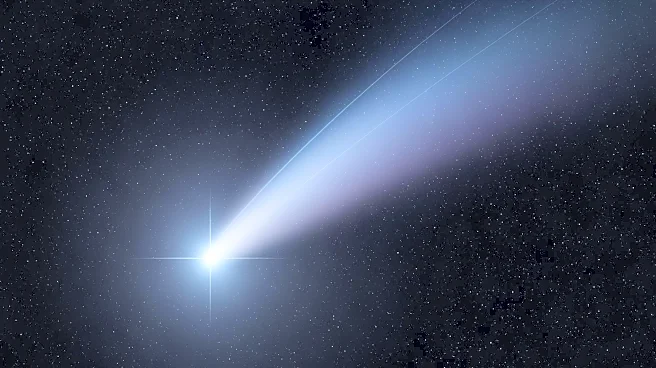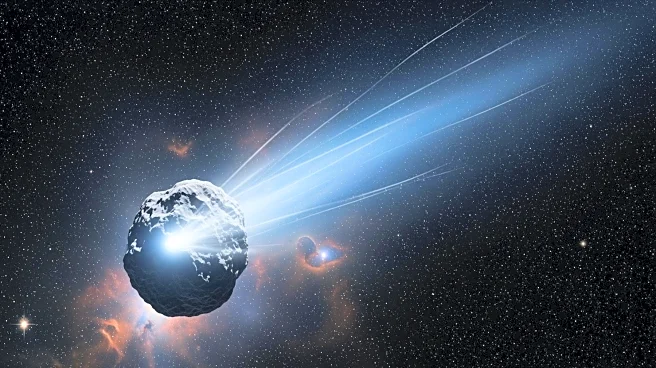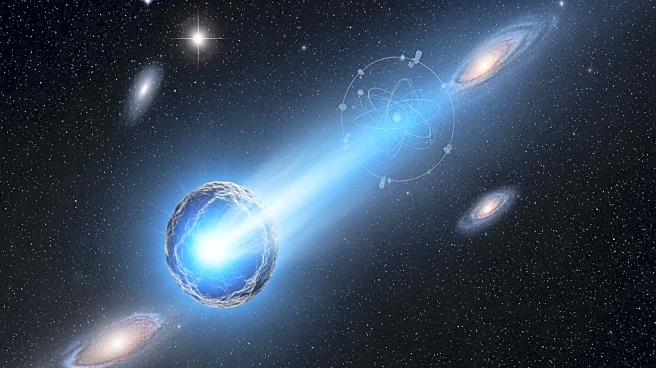What's Happening?
Interstellar comet 3I/ATLAS has re-emerged into the pre-dawn sky, visible near Virgo with a magnitude of +12, requiring a telescope for observation. Recent images from the Virtual Telescope Project reveal
a longer ion tail and a visible anti-tail, indicating increased post-perihelion activity. Despite viral claims of a catastrophic breakup, credible sources confirm the comet remains intact and is brightening as it evolves. NASA has reiterated that 3I/ATLAS poses no threat to Earth, with its closest approach being approximately 1.8 AU on December 19, 2025. European spacecraft, including ESA's JUICE, are involved in observing the comet, with data expected in early 2026.
Why It's Important?
The reappearance of 3I/ATLAS provides a unique opportunity for scientific observation and study of interstellar objects. As the third confirmed interstellar comet, its behavior and characteristics offer insights into the composition and dynamics of such celestial bodies. The comet's activity, including its ion and anti-tail formations, contributes to understanding cometary physics and the effects of solar wind. The involvement of international space agencies underscores the global interest in space exploration and the collaborative efforts to gather and analyze data from interstellar phenomena.
What's Next?
As 3I/ATLAS continues its journey, it will become easier to observe as it moves toward Leo, providing better imaging opportunities for amateur astronomers. The closest approach on December 19, 2025, will allow for detailed observations, although it will remain a telescopic target. Scientific papers and spacecraft datasets are expected to be released over the coming months, with ESA's JUICE observations anticipated to be publicly available in early 2026. This ongoing observation will enhance the understanding of interstellar comets and their impact on space science.
Beyond the Headlines
The comet's reappearance and subsequent observations highlight the importance of debunking misinformation, as viral claims of an explosion were proven false. This incident underscores the need for accurate scientific communication and the role of credible sources in maintaining public trust in scientific discoveries. The study of 3I/ATLAS also contributes to the broader narrative of space exploration, emphasizing the significance of interstellar objects in understanding the universe beyond our solar system.











